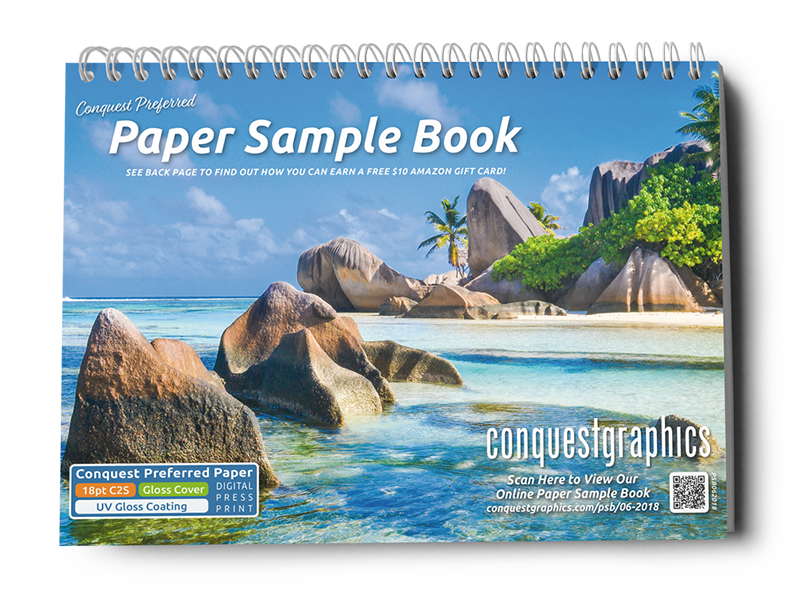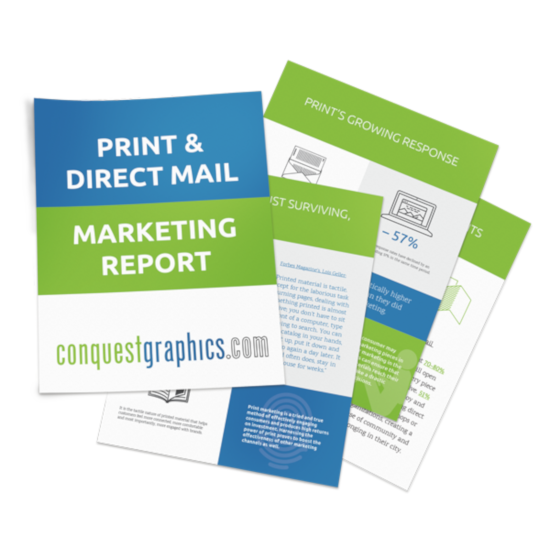Contact a Direct Mail Expert Now!
Call 804-591-3352 to get directly in touch with one of our mail experts, any time from 8A - 7P ET.
Questions? Call a Direct Mail Expert: 804-591-3352
×
Want to chat with a direct mail expert?
Tap here or dial 804-591-3352 to give them a call, 8A - 7P ET !
While it may seem to be a tremendous task at first, the process of planning, designing, ordering, printing and mailing a catalog is not as difficult as it seems. Thanks to the innovations and capabilities of some web-to-print printers, the difficulty of at least three of those steps have decreased tremendously, giving customers the chance to focus more heavily on the designing and planning stages of their catalog creation process.
To make the process of printing and mailing a catalog easier, we’ve created a step by step guide that includes practically every detail about each step you can expect to encounter as you build your catalog mailer. Keep in mind that not every single step is applicable to every type of catalog, so you may not have to follow every single tip outlined in this guide to print and mail an incredible catalog.
At the end of this blog post, we’ve included a link to download a special multistage checklist that can be printed out and used to track your progress as you complete your own mailed catalog project.
Step 1. Start with the end in mind.
One of the best approaches to beginning anything is to start with the end in mind. This doesn’t just mean trying to imagine what your end product—in this case a catalog—will look like. This means starting with a clear concept for the impact you want the catalog to have.
Knowing roughly what you want most out of the catalog marketing project will enable you to develop useful, actionable mission statements and ideas that will serve to guide you as you go throughout the remainder of your catalog creation process.
One way you can make this step as fruitful as possible is by answering a few questions that will help you develop some actionable answers regarding your catalog marketing project. It’s important to note that at this stage, we’re talking about just the idea of the catalog, not anything about its design or specific components.
Here are a few of the ones we find most useful for developing a clearer vision for catalog mailers with a set of example responses to lend some clarification top each of the questions. When you answer these questions for your own catalog project, try to be as specific as possible and include details about the exact products or specific actions each question is asking about.
The more detail you provide here, the less work you’ll have to do later when you’re developing the catalog’s contents.
Q: How will your customers encounter this catalog?
A: They will receive it by mail, by picking one up at one of our locations, by requesting one, by downloading one from our website, by viewing it online, by attending a trade show or public event, etc.
Q: What do you want customers to get out of your catalog?
A: A convenient means of ordering our products via mail or by phone, a better understanding of who we are as a brand or a stronger sense of brand familiarity, an idea of what they will purchase when they come to one of our stores or locations or when they order online, familiarity with a new line of services or products we offer, creative inspiration that will encourage them to buy more of our products, a sense that your brand relates to them on a more personal level that makes them feel like they are a part of a greater community of your customers or those passionate about whatever it is you do specifically, a source of entertainment and editorial content, etc.
Q: What do you want customers to do as soon as they finish reading your catalog?
A: Hold on to it to keep it as a guide for future ordering, make a call and place an order for specific products or services, feel inspired to come and visit one of our stores or locations, check out our social media or online presence to connect on a deeper level, feel a stronger loyalty to your brand or products that doesn’t necessarily manifest itself in an immediate action or purchase, but rather takes place over time as the customer chooses your brand over others due to their increased sense of loyalty, etc.
Q: What do you want to get out of this catalog?
A: Increased sales for a specific product or line of products, an increased awareness and usage of some of the lesser-known products or service offerings you provide, increased sales across all product categories, a stronger public identity that helps rally employees and improve company culture, a sense that your company or organization is contributing to the cutting-edge discussions of your industry, etc.
Now that you have a clear idea of what you want your catalog to accomplish conceptually, you can more easily figure out the logical details outlined in the next few steps.
Step 2. Outline your catalog’s sections and come up with a specific “mission statement” for each
Catalogs are traditionally made up of a set of core components that have very clearly defined purposes and content. When a reader picks up a catalog, they usually have some expectation that the piece will have somewhat of a resemblance to a standard catalog structure.
Making sure your catalog has a similar structuring of information will help insure that readers get a familiar experience out of reading your catalog, and this will enable them to be more comfortable visualizing how they might use the products listed and it makes the ordering process easier, thereby increasing the likelihood of making sales.
The typical catalog structure goes as follows:
Front Cover: some say the front cover is the absolute most important page of your entire catalog, and they’re not necessarily exaggerating or wrong. For magazines, the cover is what draws the readers attention and convinces them to purchase or read the edition. While catalogs aren’t always sold on news stands or in a similar fashion to magazines, the principles about a cover’s attractiveness generating reader intrigue are the same. The more interesting your catalog cover is, the more likely you are to sell your brand and the products inside to your reader. Once your readers have “sold” their attention over to you, the remainder of your catalog’s sections0 are put to use as they begin shaping the reader’s experience as they go through your catalog.
Introduction Pages: while these pages aren’t required for every catalog, they are absolutely a must-have for any catalogs that are trying to sell your brand or create a sense of identity around your products. Leaving these pages out denies a catalog of the ability to truly tell a story. A purely utilitarian catalog would leave these pages out since they’re not useful for a catalog’s main directive, which is to display a range of available goods or services offered by a company or organization. In some cases, these pages may be substituted for advertising space, but that may not be the right option for all types of marketing catalogs.
Index or Table of Contents: the table of contents serves as the basic roadmap that can more directly guide your readers to their desired pages and sections. A well thought out table of contents can make reading your catalog a more pleasant experience, and it places your readers’ needs and interests as a top priority. Always ask yourself, “How can I make the reading experience even easier and more efficient for readers?” The table of contents is one of the keys to making your whole catalog more efficient at converting readers’ eyeballs into sales.
Product Listings or Main Content: this is where the meat and potatoes of your catalog are placed. Here you include your selected list of products and services that you wish to highlight in this edition, and you have a great deal of editorial responsibility to make sure your brand remains consistent and intentional about all its choices throughout. In these pages, make sure you highlight the products and services that you’d like to prioritize above others, and include visual representations of the products so your reader can visualize what having your product or service in their own life could be like for them. We’ll get more into the details of how you present information here later, but for now, it suffices to say that this should be the longest portion of your catalog (depending on the type of catalog you’re trying to produce).
The content in the product listings or main content section of your catalog should be sectioned off into various product categories so your reader can easily navigate to categories of interest from the table of contents. Coming up with how you will sectionalize your products or services is a step to save for later when you focus on writing and producing the content, so don’t worry too much about it now, but do keep it in the back of your mind so you can begin developing an understanding of how you’d like content to be arranged so you can write a better mission statement for the section next.
Final Pages: the final pages of your catalog are the last few pages that buffer the product listings and main content from the back page. These pages can be filled with stories that serve to characterize your brand, or even customer testimonials. These pages could also be dispersed throughout your product listings or between sections if need be. They could also be used for advertising space, if need be.
Ordering Forms or a Guide for How to Order the Products Listed: in the earlier days of catalogs, there would be a form that a reader could fill out and return via mail that would be useful for placing orders. The benefits of such ordering systems are that they place the onus of writing an order down correctly on the customer and they don’t require much time or labor on your part for order entry tasks. The drawbacks are that things can happen to the order forms in transit back to the supplier such as getting rained on or lost and the turnaround time for the order being placed becomes dependent upon how quickly the mail service is able to get the completed order back to you.
For that reason, many brands have resorted to using QR codes that are positioned near the products listed that readers can scan and instantly be taken to the webpages for ordering the product listed. These digital methods of placing orders are far more efficient and allow for you to guarantee a quicker turnaround since you can begin work on an order as soon as a customer places it. You can also more generally point readers to places on your website that offer the various categories of products so long as the product categories are small enough to do so.
Ordering forms aren’t common anymore, but this section can easily be replaced by forms for customers to use that allow them to create a written wish list or calculate their order total, etc.
Back Cover: almost as important as the front cover, the back cover must also be visually appealing and serve to draw readers in. Here you can highlight your most important products for the catalog edition, and you can present something that proposes the various benefits a reader could get out of learning more about your company through reading what’s inside.
Now that you have an idea of the traditional sections of a catalog, you can begin to get a feel for which ones you’ll need to include in yours to achieve the aspirations you outlined in the previous step. If you have any additional sections that you’d like to add that are specific to your business or organization’s industry or category of products and offerings.
For each of the sections you decide you need to include, come up with a guiding “mission statement” that outlines exactly what each section is intended to accomplish and. What this does is it forces you to provide a rationale for why each section is included and it creates the guidelines for your teams or self to use as they generate the content for each section.
Step 3. Delegate Work and Create the Catalog
In most businesses and organizations, there are specialized teams or positions within the organization that provide a unique skillset that are especially useful for generating the types of high-quality content a catalog is expected to contain.
Choosing the people in your organization who will be on the catalog creation team involves knowing who does what best, so it helps to know your co-workers, but it is by no means required.
The structuring of teams to separately work on the various sections of a catalog simultaneously usually results in the most friction and inefficiency. Trying to base the teams on the sections of the catalog makes it so your teams don’t feel engaged in the greater project at hand which is the compilation of a catalog.
Therefore, it’s probably best to structure teams by skill set, and to have them begin their work on their respective components of the catalog at staggered times so no one has to begin work on their project without having the resources and content they need to succeed.
A general schedule and division of teams will vary greatly from business to business, and there’s no single methodology for delegating the responsibilities in completing the catalog in the most efficient manner possible.
We’ve tried to keep things as generalized and conceptual as possible in the following example work schedule shows a suggested sequence of tasks and objectives for the sake of not limiting the application of this example to any specific type of organization or team. This example could be applied to a 200 person team or a 2 person team.
Based on our experiences both working on catalogs and working for teams that have created their own catalogs, we’ve created the following work schedule that can be scaled up or down depending on your organization or business’ needs in the catalog production process:
Block 1. Make a Game Plan and Establish Metrics
Team: Product Managers or Strategists and Marketing Managers
Tasks:
Present vision for catalog to those that specialize in product knowledge and marketing
Loosely generate a selection of products and services the team wishes to prioritize
Develop a review system for each of the following steps so those familiar with the strategy will be required to greenlight progress before allowing project to move forward
Choose specific metrics you wish to focus on improving for this catalog campaign
Use the metrics as a standard for further marketing research when determining product selection
Ensure there is an integrated method of measuring the success of your catalog marketing campaign, utilizing methods such as those outlined in our blog on the topic
Block 2. Align Mailing and Marketing Target Audiences (Optional)
Team: Management teams and strategists
Tasks:
For mailed catalogs, you must determine the target audiences you will be sending these to before starting on the catalog production process
This is because the audience so heavily shapes the presentation of the content
Even if you just have a general idea of the specific market segments you want your catalog to reach, that is sufficient for targeting the content appropriately
Block 3. Edit and Adjust Contents Based on Market and Sales Data
Team: IT, Sales Specialists and Product Managers
Tasks:
Retrieve applicable sales data about selected products and services to determine which to prioritize and highlight
Look at past catalog campaigns (if possible) or other marketing efforts to see which methods and approaches increased valued metrics the most
Develop finalized list of specific products or services to list
Block 4. Write All Copy and Build Design Concepts
Team: Marketing Team, Editors or Writers and Senior Design Team
Tasks:
Generate or gather textual content about each of the products in the finalized product list
Come up with editorial draft of the catalog (meaning no pictures, just the text and sequence of product listings with text content)
Have senior designers look over the editorial draft to determine how they think products should be presented
Make concepts of possible page layouts and stylings so photographers will have direction with their product photo selection/shooting
Block 5. Collect All Photography and Images to be Included
Team: Photographers and Product Image Specialists
Tasks:
Gather all the existing images of the products in the finalized list and shoot new ones that may be needed to meet planned design requirements of catalog laid out in previous block
Organize and compile images in a way that will be easy for review teams and editors in the next block to make use of
For smaller businesses or startups, this process may involve finding a freelance photographer who has some experience in product photography
Block 6. Build All Digital Components of Marketing Campaign (Optional)
Team: Digital Content Specialists and Visual Layout Designers
Tasks:
If you intend to include a separate digital catalog product or presentation
You should hand off all text and images to digital content specialists to begin developing a visually similar digital experience for the catalog
If you have a small business that lacks an internal graphic design department, you should get the help of an external freelance graphic designer
Or if you have some graphic design experience, you can take complete control of the project and attempt to do the catalog creation yourself; this may be very difficult, so working in teams is recommended
Block 7. Revise and Review Drafts Repeatedly Until Finalized
Team: Graphic Designers and Editorial Reviewers
Tasks:
Have graphic designers and layout specialists put together the final drafts of the catalog so editorial reviewers and senior designers can continue making revisions and perfecting the content until it’s in its final form
Undergo multiple review processes until all senior reviewers say the final catalog is good to go
Block 8. Complete Managerial Reviews and Prepare to Publish
Team: Product Strategists and Marketing Managers
Tasks:
Have the same product strategists and marketing managers who initially planned the approach to the catalog review the finalized piece to ensure it’s on point
Prepare the files for sending to a web-to-print printer
While the titles and exact details of the tasks outlined in the above example may vary from business to business, the above work schedule provides a recommended sequence for strategically timing the various stages of your catalog’s creation.
If you don’t have teams that can work on each of these stages, identify the person in your business that has the skill set you’d closely align with the respective titles in the work schedule and consult with them as you go about completing the catalog.
Using this general structure as a guide for your approach to the planning and production of a catalog, it should be an efficient and less labor-intensive process than previously imagined.
The second component of this section’s directive should not be forgotten. Setting a definitive deadline for the various phases of your catalog production process will guarantee that it gets done. Without deadlines, those assisting you in teams will wander aimlessly and they’ll operate only based on their own deadlines, if at all.
To save yourself the organizational headache that that would be, set deadlines for each of the above blocks so everyone has a definitive date they can point to and use as they plan their work schedule.
Step 4. Print the Finalized Catalog and Plan for Distribution
Now that you have the finalized files of your catalog prepared and ready for a printer, you should determine the printer that will handle the job and coordinate all ordering accordingly.
If you decide to order print online, we recommend using a reliable web-to-print printer that has the scale and experience to handle your job easily. It’d be a nightmare to spend so long preparing your catalog for publication only to have an inexperienced or low-quality printer botch the job.
We also recommend choosing a printer that has an in-house mail center. It’s hard to find printers that specialize in mailing, too, but when you do find them, they can truly save you tons of time and money by maximizing efficiencies and mailing nearly immediately after your job has finished printing, stitching and folding. If you’re distributing your catalog by another means than mail, the remainder of this guide will probably not be very helpful.
Step 5. Mailing Your Catalog and Wrapping Up
As we mentioned in the previous step, there are a few web-to-print printers that also offer in-house mailing services, such as Conquest Graphics. These businesses offer the benefit of increased efficiency and decreased costs due to the elimination of a few arduous steps in the printing and mailing process that would be required if you were to try mailing the project yourself.
mail services typically have a great deal of experience working with the USPS. By having a true “mail center” in house, a printer is indicating that they have all the necessary tools and equipment to appropriately prepare your catalog for mailing in a way that USPS will be guaranteed to accept.
With years of experience working with the mailing of printed products, a web-to-print printer with mailing capabilities can save you from making costly mistakes that are truly easy to make. While it may seem simple at first, mail gets very complicated when it comes to mailing multipage print pieces like catalogs.
Choosing to go with an online printer that has mail services will reduce your costs greatly. With some printers, you won’t even be charged service fees for adding on the mailing. At printers like Conquest Graphics, you’ll find that you’ll only be charged the exact same amount you would have been charged for just the postage by the post office. Since mail centers offer in-house metering and pre-sorting services, you’ll be given the discounted post office rates for your mailing and it’ll save you from having to spend hours and hours sorting your mailers as you prepare to mail it out.
Printers also offer the unique advantage of being able to print your mailing labels for customers in house. Typically, the process of printing and adhering the mailing labels in a way that the USPS will accept is a difficult and tricky task.
An outstanding catalog can make all the difference in your business or organization’s sales and they can really have a massive impact on the success of new products. They can also serve as powerful branding tools that strengthen both grow your customer base and strengthen your existing customers’ loyalty.
For these reasons, we created this guide with the hopes that your marketing team can begin truly taking advantage of the unique and incomparable benefits of catalog marketing.
In the end, choosing to go with a printer that also mails is the obvious choice for any business that lacks its own mail center and wants to avoid the potential for disaster due to the steep learning curve of USPS policies and regulations. If your business wants to take advantage of the cost savings and time savings our mailing experience offers, print and mail your next catalog project with Conquest Graphics today.









